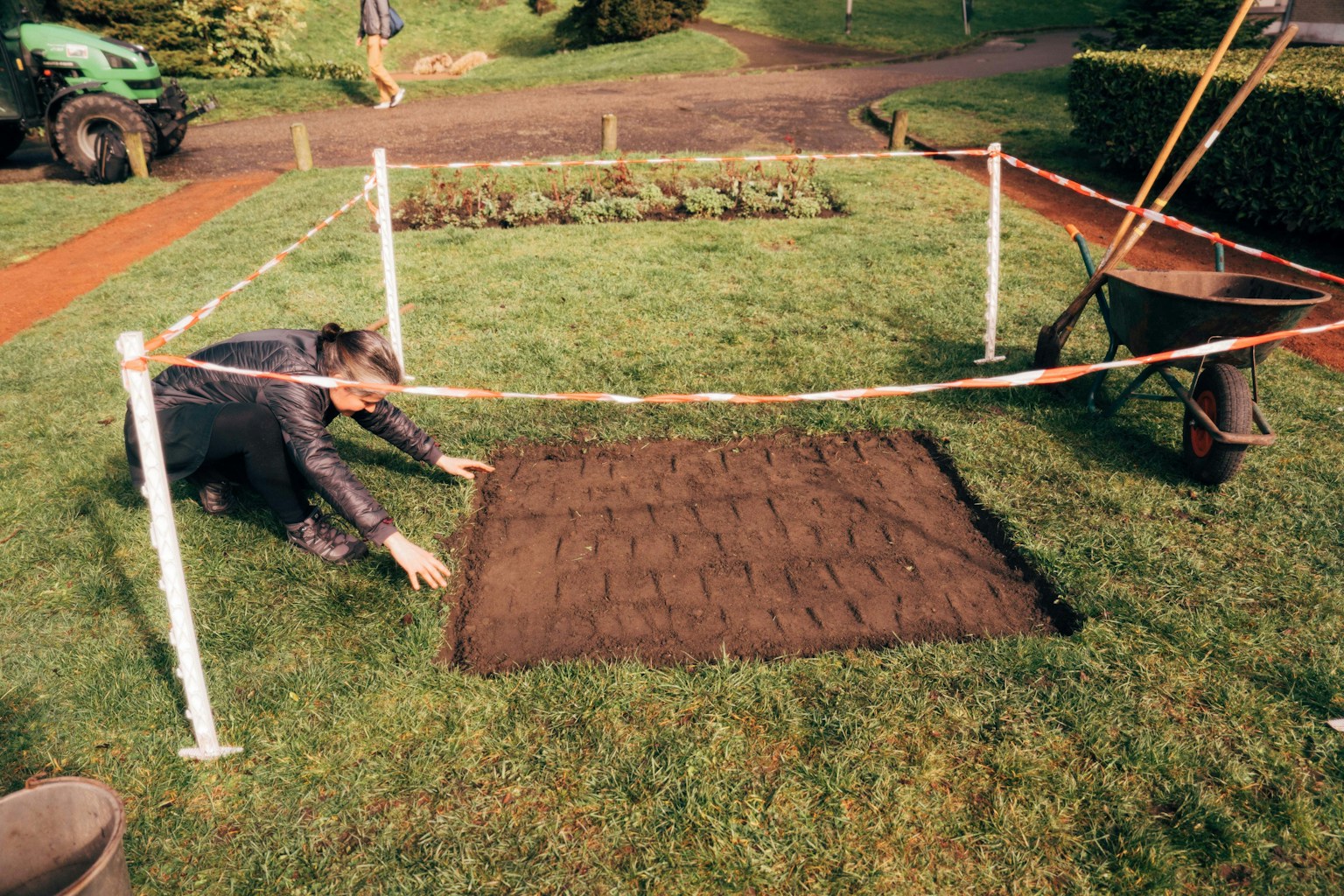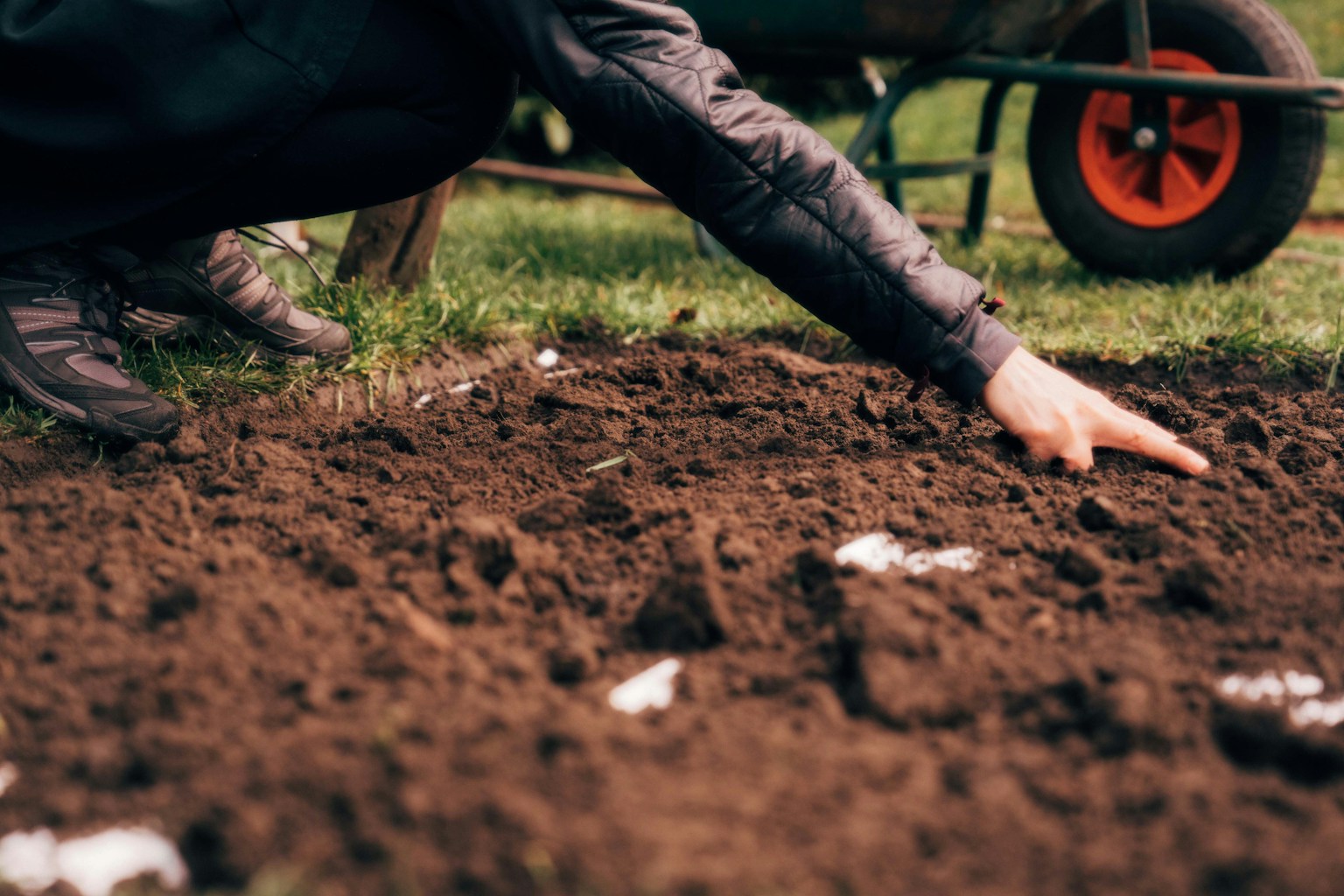This collective process considers the garden as a work of art and continues the long-standing relationship between Audrey Cottin and S.M.A.K. In 2017, the museum added Lift me (2011) to the collection, as well as three works from the Seed Arrangements series. This year, S.M.A.K. is expanding the collection with Seeds Arrangement #10 (2023), which is the central element of La Semeuse ~ The Sower.
For the first time, Audrey Cottin has buried her artwork, namely in the garden of Citadel Park. In this project, she observes, studies and valorises the shapes, colours and smells of seeds. Some seeds Cottin obtained from the seed library Fraternités Ouvrières, in Mouscron, created in 1969 on the initiative of Josine and Gilbert Cardon. Others came from regular garden centres and some seeds were grown by herself.
Seeds are strong. They can travel miles and cross the landscape via water, wind and all kinds of animals, such as insects. In the ground, they can pick the best time to bloom. Seeds are linked to our past and to our future. In the 1980s, new technologies greatly broadened the possibilities within this field, although the benefits did not always come without harmful side effects.
The Seeds Arrangement works are part of a new series, bringing together different gardening techniques and practices, including square foot gardening and permaculture. This work consists of crystal paper, acid-free paper, seeds and glue. Most of the seeds are organic and packed between two sheets of acid-free paper for optimal conservation. The seeds are arranged according to their characteristics and growth potential. As part of La Semeuse ~ The Sower, Audrey Cottin also rubs a bas-relief depicting one of the crafts, a woman: La Semeuse. In this way, she connects S.M.A.K.'s collection to the museum's façade and the Citadel Park's garden.
This project is a continuation of Cottin's search for answers to the question of how to be an artist at her own rhythm, as a philosophy and a modus operandi. The place of the artist, the citizen, plants, the spoken word and the dissemination of knowledge makes it possible to create connections and develop ideas related to ecology, art, politics and public space.




























